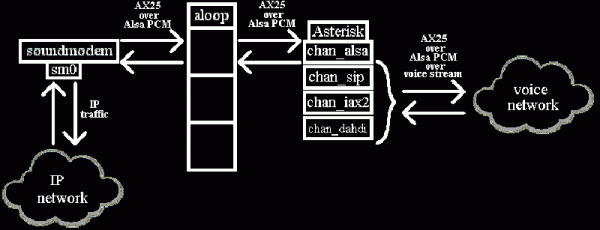Dial-up modems used to be the default way of accessing the Internet, but times have moved on. They’re now largely esoteric relics from a time gone by. With regular old phone lines rather hard to come by these days, [Peter Mount] decided to try getting a pair of dial-up modems working over VoIP instead.
The build started with a pair of Linksys PAP2T VoIP phone adapters, which were originally designed for hooking regular phones up to VoIP systems. He paired each US Robotics modem with a PAP2T, and then hooked both into a VoIP Private Branch Exchange which he set up using 3cx on a Raspberry Pi 3B+. The Pi also acted as a server for the modems to connect to. It took a lot of fiddly configuration steps, but he found success in the end. On YouTube, he demonstrates the setup—with that glorious modem sound—communicating successfully at a rate of 9600 baud.
It’s nice to see this vintage hardware communicating in a what is effectively a simulated world created entirely within modern hardware. We’ve seen similar projects before, like this attempt to get dial-up going over Discord. If you’re doing your own odd-ball screechy communications experiments, don’t hesitate to drop us a line!
Continue reading “Getting Dial-Up To Work Over VOIP Isn’t Always Easy”



















